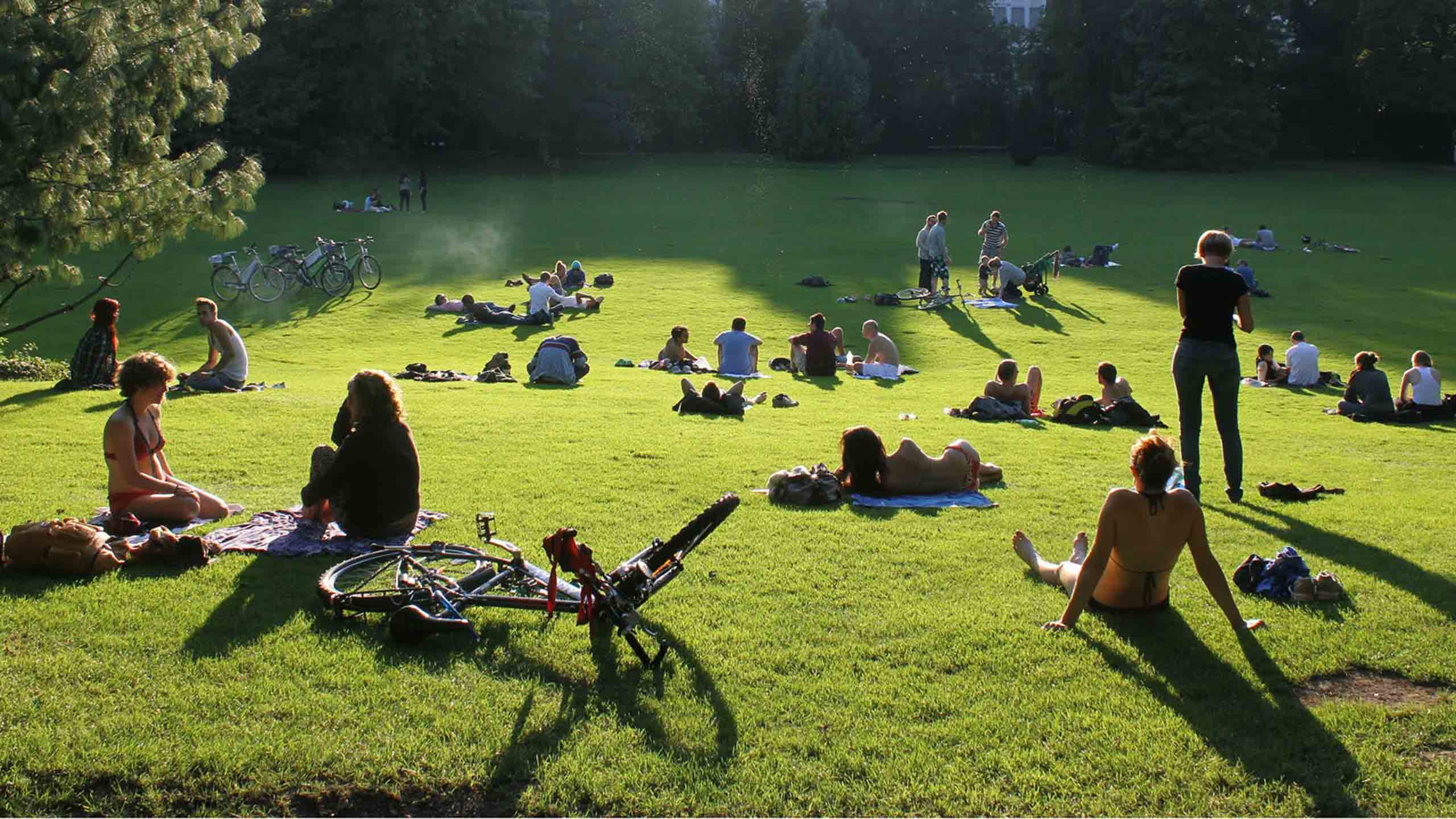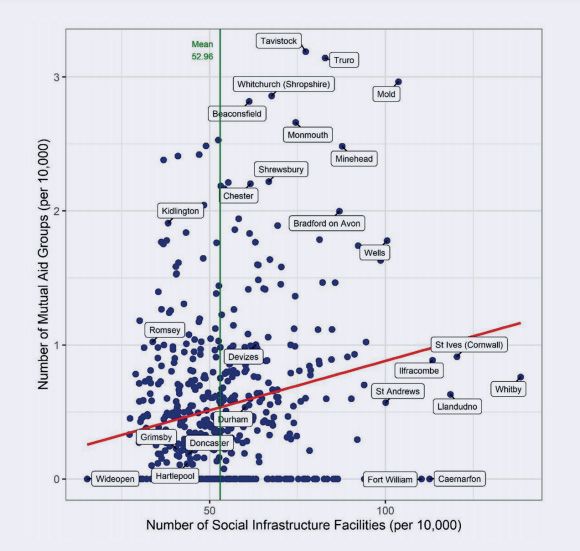Ring-fence funding for social plumbing to level up the UK

Cambridge experts argue that spaces and facilities where people mix and engage, from pubs to playgrounds, are just as vital as physical infrastructure projects for reviving ‘left behind’ towns.

The government should invest at least a quarter of its proposed funding for “levelling up” in the spaces and facilities that bring people together – from pubs and parks to libraries and sports clubs – which are just as vital to local economies and civic pride as headline-grabbing upgrades to rail, road and broadband, according to University of Cambridge experts.
A new report from the Bennett Institute for Public Policy calls for 25% of both the Levelling Up and Towns funds – as well as part of the Dormant Assets fund, set to unlock millions from insurance and pensions – to be earmarked for “social infrastructure”: amenities and businesses that plug people into their communities and generate powerful feelings of local identity.
Researchers argue that the success of flagship physical infrastructure schemes, whether HS2 or the 5G rollout, will rely on the health and productivity of the towns and regions they aim to connect – and, as such, this “social plumbing” requires equal investment.
They say government should seek to create a specific fund for social infrastructure as part of the post-COVID recovery agenda, and help incentivise private investment (for example, via levies on housing developers for provision of public parks, as seen in Canada).
“When the local pub is shuttered, the park is unkempt and the high street has been hollowed out, the pride of a once close-knit community can give way to pessimism and disenchantment,” said Prof Michael Kenny, report co-author and Director of the Bennett Institute at Cambridge.
“There is an ingrained bias in government towards large-scale infrastructure projects, but interventions that seek to restore dilapidated town centres or support local initiatives may be far more socially and economically beneficial than many policy-makers appreciate.”
“To realise the full potential of new railway stations or bridges, it is vital to attend to the needs of the communities expected to use them,” Kenny said.
The report, part of the Institute’s Townscapes project, highlights the fact that social infrastructure-related services, from cafes and cinemas to museums and leisure centres, employ around 2.3m people across the UK, and account for almost half the jobs in some “left behind” towns – particularly those on the coast, such as Skegness (46% of total employment) and Llandudno (40%).
The researchers point out that these sectors are a vital source of work and career development for those who can otherwise struggle to gain a foothold in the labour market.
Young people, for example, have been hit hardest by loss of work during the pandemic. The employers of almost one in five (18.83%) working people aged between 16-24 come under the umbrella of “social infrastructure” say the Cambridge team. These sectors are also major employers of people with disabilities or learning difficulties.
The COVID-19 pandemic has further demonstrated the need for this type of social infrastructure, according to the report, as many of these businesses and organisations had to cease the activities that define them – yet still provided support and relief to local residents.
From pubs offering ‘meals on wheels’ and running virtual bingo nights, to sports clubs distributing educational workbooks and phoning vulnerable supporters, and library services running online reading sessions while their buildings became hubs for food distribution.

In fact, researchers found that the number of COVID-19 mutual aid groups – those providing voluntary services from food delivery to neighbourhood check-ins – correlated with the level of community facilities and social spaces available to local residents.
Towns like Tavistock and Mold with high numbers of mutual aid groups have above-average levels of social infrastructure, while those with very low densities of social infrastructure – such as Grimsby and Wideopen – had few or even no reported Covid mutual aid groups.
“To realise the full potential of new railway stations or bridges, it is vital to attend to the needs of the communities expected to use them”
Michael Kenny

Kenny and his Cambridge co-author Tom Kelsey define social infrastructure as “spaces in which regular interactions are facilitated between and within the diverse sections of a community”, where meaningful relationships and forms of trust are constructed among local people. This can range from scout meetings in a church hall to the local curry house on a Friday night.
The decline of many UK towns gets spoken about in terms of the local high street, which has come under further pressure with pandemic lockdowns and rise of online retail. “The importance of the high street goes beyond commercial and retail. Visits to a town centre bring different parts of the community together,” said Kelsey.
The report highlights recent research suggesting that those who pop into town with friends and family spend up to 50% more per head than those visiting alone, and shoppers who visit cafes or restaurants during their high street trip spend almost 50% more in nearby retail. Visitors to UK galleries and museums contribute millions of pounds to town centres.
“Investing in cafes, cinemas, pubs and heritage assets on high streets is central to driving footfall and incentivising spending in the local economy,” Kelsey said. The report recommends the government revisit its decision to allow developers to convert vacant retail and café space to residential properties, as it will damage “the quality of community life”.
Investment in “heritage assets”, such as the conversion of a former 18th century silk mill into Derby’s new Museum of Making, may be a valuable way of “re-animating feelings of belonging and identity”, say the researchers.
They point to the town of Ramsey, Cambridgeshire, where local sites – including an old WWII training camp – connected by walking tours and a vintage bus service created both a knock-on benefit for local retailers and an increased positivity about living there, according to a survey of residents.
Health benefits of social infrastructure beyond COVID-19 support are also covered by the report. Access to community green spaces such as parks and public gardens has been repeatedly shown to reduce mental distress, such as depression and anxiety, and – along with sports and leisure centres – can support higher fitness levels and reduce obesity rates.
The researchers chart correlations between social infrastructure and loneliness – often described as an epidemic in modern society – and find a “notable tendency” for areas with fewer social facilities to have a higher proportion of residents over 65 at risk of loneliness.
Additionally, types of social infrastructure such as libraries, language schools and museums are valuable sources of the skill development and lifelong learning that boosts productivity. Many of these spaces proactively offer training and work to the young, unemployed, or socially isolated, say researchers, as well as providing Internet access or a refuge for quiet study.
While the research team caution that there is no one-size-fits-all approach to the problem of “levelling up”, the report shows many commonalities across “left behind” areas of the UK.
“We are seeing the loss of the spaces and facilities, the social plumbing, that is fundamental to making a place desirable to live and work,” said Michael Kenny. “There are towns where the number of public meeting places has dwindled to precarious levels in recent years.
“We know that levels of community provision deliver a wide range of economic and social benefits. Investment in social infrastructure should not be seen as a rival to funding large-scale projects in areas like transport, but a vital accompaniment if we really are to level up the UK,” he added.
Images:
Top: The Wydale Hall & Emmaus Centre in Scarborough. Luke Porter via Unsplash.
Behind quote: Pub. Sam Barber via Unsplash.
